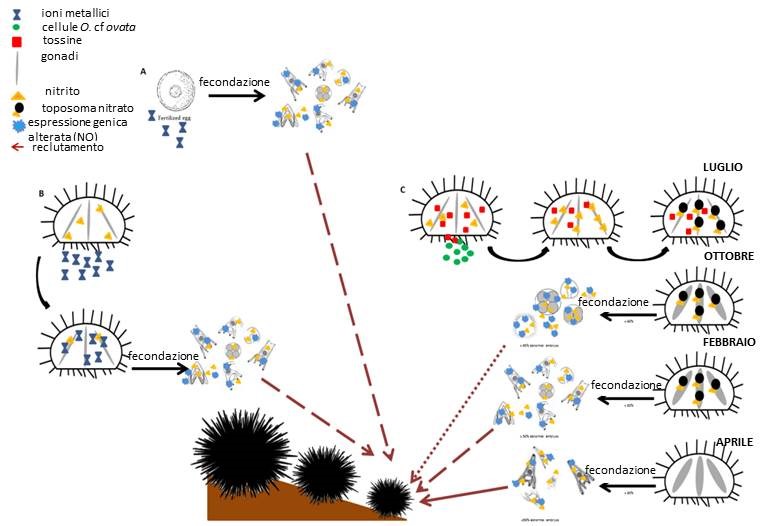New insights into the role of nitric oxide in marine organisms. Experiments on sea urchin
Nitric oxide, a simple molecule composed by two atoms, nitrogen and oxygen, shows peculiar features. This gas, initially identified as an air pollutant, has been recognized to be one of the most widespread signaling molecule in living organisms. Studies performed at SZN highlighted the involvement of nitric oxide in several physiological processes in marine organisms, such as ink production and color changes in the cuttlefish Sepia officinalis, a cephalopod mollusk, and the metamorphosis in the ascidian Ciona intestinalis. A research project carried out at the SZN BEOM department has revealed the importance of nitric oxide also in the response of marine organisms to environmental constrains. Indeed, sea urchin developing embryos exposed to different cadmium and manganese  concentrations produce nitric oxide, which then directly or indirectly modulates the expression of some genes involved in skeletogenesis, transport and stress response (Fig 1A, Migliaccio et al., 2014). Moreover, experiments carried out on adults, treated with environmentally relevant cadmium and manganese concentrations, have revealed the involvement of nitric oxide in the transmission of the “maternal” stress to the progeny (Fig 1B, Migliaccio et al., 2015). Recently, in the course of a study on the reproductive ability of the sea urchin population from Gaiola, a marine protected area affected by Ostreopsis cf ovata harmful algal blooms, we reported the first case of a hidden and delayed impact of these blooms, which affect the adults in a subtle way, but seriously damage the offspring that develops several months after the bloom. We found that nitric oxide, produced following the bloom, induces the nitration of the major yolk protein, toposome, in the female gonads, which presumably causes the developmental anomalies observed in the progeny. Nitric oxide played also a beneficial role in the defence mechanisms and in the recovery of the offspring (Fig 1C, Migliaccio et al., 2016). Our studies contribute to increase our knowledge on the effects of environmental pressures on sea urchin, a key benthic species and point to the use of nitric oxide as a new marker of stress conditions in marine organisms.
concentrations produce nitric oxide, which then directly or indirectly modulates the expression of some genes involved in skeletogenesis, transport and stress response (Fig 1A, Migliaccio et al., 2014). Moreover, experiments carried out on adults, treated with environmentally relevant cadmium and manganese concentrations, have revealed the involvement of nitric oxide in the transmission of the “maternal” stress to the progeny (Fig 1B, Migliaccio et al., 2015). Recently, in the course of a study on the reproductive ability of the sea urchin population from Gaiola, a marine protected area affected by Ostreopsis cf ovata harmful algal blooms, we reported the first case of a hidden and delayed impact of these blooms, which affect the adults in a subtle way, but seriously damage the offspring that develops several months after the bloom. We found that nitric oxide, produced following the bloom, induces the nitration of the major yolk protein, toposome, in the female gonads, which presumably causes the developmental anomalies observed in the progeny. Nitric oxide played also a beneficial role in the defence mechanisms and in the recovery of the offspring (Fig 1C, Migliaccio et al., 2016). Our studies contribute to increase our knowledge on the effects of environmental pressures on sea urchin, a key benthic species and point to the use of nitric oxide as a new marker of stress conditions in marine organisms.
Oriana Migliaccio
For Further Information:
http://www.sciencedirect.com/science/article/pii/S0166445X14002720
http://journals.plos.org/plosone/article?id=10.1371/journal.pone.0131815










